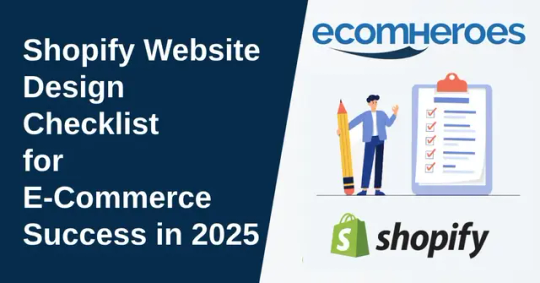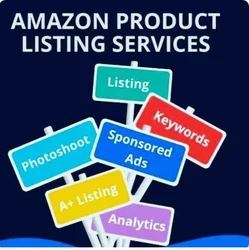#shopify web design
Explore tagged Tumblr posts
Text

Dive into a realm of digital mastery with Shopify Experts India. Here, innovation meets proficiency as we unlock the full potential of your e-commerce journey. From seamless user experiences to cutting-edge strategies, our experts craft online stores that not only meet but exceed expectations. Elevate your digital presence with the pinnacle of e-commerce excellence.
2 notes
·
View notes
Text
Shopify Website Development
Are you looking to build an online store that is both user-friendly and visually appealing? Look no further than Shopify website development! With its easy-to-use platform and customizable themes, you can create a unique and professional e-commerce site in no time. Don't wait any longer to start selling your products online and reaching a wider audience. Let Shopify and Jyoti Kumari help you succeed!

4 notes
·
View notes
Text
Shopify Web Design
Isotek Digital Solutions, we enable ambitious businesses to launch, grow and scale on the internet through beautifully-designed, high-converting, Shopify websites. If you’re just starting out—or are ready to take your current store to the next level— we design Shopify websites that are not just pretty but also perform, convert, and sell.convert, and sell.
Website:
https://isotekdigitalsolutions.com/shopify-web-design/
0 notes
Text

When it comes to building high-performing e-commerce stores, Shopify remains a favorite for brands across the globe. But what powers these sleek, fast, and conversion-friendly stores? The answer lies deep within its core — Shopify’s theme architecture. For more information view: https://medium.com/@techwishesseo/whats-inside-shopify-s-theme-architecture-and-why-it-s-so-powerful-3690e55fb2cb
0 notes
Text

Enhance Your Digital Presence
Our SEO company ensures your business stands out in search results through proven, ethical optimization techniques. Contact us now!
#wordpress website design#wordpress web design#website maintenance services#digital marketing agency#digital marketing#magento website design#magento web design#Web Design service#Website Development#shopify web design
0 notes
Text
🔥 What's Next for Shopify Web Development in 2025?

E-commerce is evolving, and staying ahead means embracing new trends that shape smarter, faster, and more personalized shopping experiences.
Check out the key Shopify web development trends for 2025 to make your store future-ready.
AI-Powered Personalization: Offer tailored shopping experiences with intelligent recommendations and personalized customer interactions.
Social Commerce: Allow customers to shop directly on platforms like Instagram, TikTok, and Pinterest with one-click checkout.
Eco-Friendly Shopping: Attract eco-conscious customers with carbon-neutral shipping options and sustainable product features.
Headless Commerce: Customize your store's design without affecting functionality, making it easier to deliver a unique shopping experience.
Progressive Web Apps (PWAs): Enhance user experience with fast-loading, app-like functionality that works even offline.
👉 Read Here: to learn more about how these trends can take your Shopify store to the next level.
🚀 Let’s build smarter shopping experiences together!
#shopifydevelopment#shopify website development#shopify web design#shopify developers#e commerce website development
0 notes
Text
Shopify Website Design Checklist for E-Commerce Success

Elevate your online store with our comprehensive Shopify Website Design Checklist. Discover expert tips, UX best practices, and conversion strategies for e-commerce success.
Read more: The Ultimate Shopify Website Design Checklist
0 notes
Text
How to Create Effective Shopify Product Management with SEO
Running a successful Shopify store requires more than just listing products and hoping for sales. To maximize visibility and conversions, you need an effective product management strategy that incorporates search engine optimization (SEO). By combining thoughtful organization with strategic keyword use, you can enhance your store’s discoverability and improve its overall performance. Here’s how to achieve effective Shopify product management with SEO:

1. Conduct Thorough Keyword Research
Effective SEO begins with understanding what your customers are searching for. Use keyword research tools like Google Keyword Planner, Ahrefs, or SEMrush to identify:
High-volume keywords related to your products.
Long-tail keywords for niche targeting.
Buyer-intent keywords that signal readiness to purchase.
Incorporate these keywords naturally into your product titles, descriptions, and meta tags to align with search intent.
2. Optimize Product Titles
Product titles play a critical role in SEO and user engagement. To make them effective:
Include primary keywords naturally.
Keep titles clear and concise (60–70 characters).
Highlight unique selling points, such as “Organic Cotton T-Shirt — Sustainable and Soft.”
Avoid keyword stuffing, as it can harm readability and SEO rankings.
3. Craft Engaging Product Descriptions
Product descriptions should inform and persuade while being SEO-friendly. Follow these tips:
Write unique descriptions for each product to avoid duplicate content penalties.
Use primary and secondary keywords naturally.
Highlight benefits and features, such as durability, eco-friendliness, or multifunctionality.
Use bullet points for readability.
For example:
“Our handcrafted leather wallets offer unmatched durability and timeless style. Perfect for everyday use, these wallets feature RFID-blocking technology to keep your information secure.”
4. Use High-Quality Images with Alt Text
Visual appeal is crucial in e-commerce, but images also contribute to SEO when properly optimized. Ensure:
Images are high-resolution and properly sized for faster loading.
File names include keywords (e.g., “red-leather-wallet.jpg”).
Alt text describes the image and incorporates relevant keywords for accessibility and SEO.
5. Leverage Meta Titles and Descriptions
Meta titles and descriptions are your storefront in search engine results. To optimize them:
Include primary keywords near the beginning.
Keep meta titles under 60 characters and meta descriptions under 155 characters.
Write compelling copy that encourages clicks, such as: “Discover our range of eco-friendly kitchenware. Free shipping on orders over $50!”
6. Organize Products with Collections and Tags
Shopify’s collections and tags help improve navigation and SEO. Best practices include:
Group similar products into collections (e.g., “Men’s Shoes” or “Winter Jackets”).
Use relevant tags for filtering, like color, size, or material.
Ensure collection pages have optimized titles, descriptions, and meta tags.
7. Enable Product Reviews and Ratings
User-generated content, like reviews, not only builds trust but also improves SEO by adding fresh, keyword-rich content to product pages. Use Shopify apps like Judge.me or Yotpo to:
Encourage customers to leave reviews.
Display ratings prominently on product pages.
8. Optimize URL Structure
Clean and descriptive URLs enhance SEO and user experience. For instance:
Use “www.mystore.com/organic-cotton-t-shirt” instead of “www.mystore.com/product12345.”
Keep URLs short and include primary keywords.
9. Implement Structured Data Markup
Structured data (schema markup) helps search engines understand your content better. Shopify supports JSON-LD for rich snippets, which can display:
Product prices and availability.
Star ratings.
Customer reviews.
Use Shopify apps like SEO Manager or Smart SEO to implement schema markup without coding.
10. Monitor Performance with Analytics
Regularly review your SEO and��product management efforts using tools like Google Analytics and Shopify’s built-in reports. Track metrics such as:
Organic traffic and bounce rates.
Conversion rates and average order value.
Top-performing keywords and pages.
Use this data to refine your strategy and address underperforming areas.
Conclusion
Effective Shopify product management with SEO is a continuous process that involves research, optimization, and analysis. By implementing the tips above, you can enhance your store’s visibility, attract more customers, and drive conversions. Focus on delivering value through both content and usability, and you’ll create a Shopify store that stands out in the competitive e-commerce landscape.
#product add#ecommerce developers#fiverr#fiverr gigs#product description#product research#shopify#shopify experts#website design#ecommerce#shopify web design#shopify development company#shopify ecommerce development#shopify tips#dropshipping#shopify pos#Product upload#product listing
0 notes
Text
0 notes
Text
#Shopify Website Design#Shopify Website for Yoga & Fitness Stores#Shopify Web Design#Shopify website design company in Delhi#Shopify web design company
0 notes
Text
Beyond Storefronts: Shopify Web Development Services Redefining E-Commerce
Embark on a transformative journey with our Shopify Web Development Services. Beyond creating online stores, we craft digital experiences that resonate. From customized themes to seamless integrations, our services elevate your e-commerce venture. Unleash the potential of Shopify with development that seamlessly blends aesthetics, functionality, and unmatched user experiences.
2 notes
·
View notes
Text
Partnering with a Shopify development agency like Jhuns Infobay can elevate your eCommerce business by creating a professional, customized, and high-performing online store. Through expert Shopify web design, tailored store development, and optimized performance, an agency ensures your site is visually appealing, user-friendly, and fully aligned with your brand. With added benefits like ongoing support and scalability, Jhuns Infobay’s services help drive customer engagement, boost conversions, and support long-term growth. Transform your Shopify online shop into a powerful platform that stands out from competitors and adapts to your evolving business needs.
0 notes
Text
0 notes
Text

Climb Search Results with Strategies
Our SEO expert uses proven techniques and data-driven strategies to drive sustainable organic growth, improve search engine visibility, and generate high-quality leads that convert. Contact us now!
#wordpress website design#wordpress web design#website maintenance services#digital marketing agency#digital marketing#magento website design#magento web design#Web Design service#Website Development#shopify web design
0 notes
Text
Marketplace Management Services by Cotask IT Solutions
Our experts will meticulously optimize your product titles, descriptions, images, and keywords to improve search rankings and conversion rates. We understand the nuances of Noon's platform and utilize proven strategies to enhance your product's visibility.
By optimizing your listings, you can expect increased traffic, higher click-through rates, and ultimately, more sales. Let us help you unlock the full potential of your Noon store.
Noon Product Listing optimization is the process of enhancing your product listings to improve their visibility in Noon's search results and attract potential customers.
Your product listings are the digital shop windows that showcase your offerings to potential customers. A compelling and informative product listing can entice shoppers to click, explore, and ultimately make a purchase. However, creating effective product listings can be time-consuming and requires expertise.

0 notes
Text
Leading Shopify Development Companies for Your Online Store in the USA
Looking for the top Shopify development companies in the USA? We’ve got you covered with a curated list of the best in the business. Shopify has rapidly become one of the premier eCommerce platforms, making the search for expert developers more crucial than ever.
Why Choose Shopify? Shopify offers a user-friendly interface, diverse capabilities, and cost-effective solutions, making it a top choice for many businesses. However, navigating the growing demand for Shopify development services can be challenging. A thriving community of skilled Shopify developers in the USA is ready to help your business succeed.
Premier Shopify Development Companies in the USA Here's a list of top-rated Shopify development companies based on their history, portfolios, customer feedback, and expertise in Shopify development.
DIT Interactive DIT Interactive places a high value on transparency and customer satisfaction. They specialize in seamless re-platforming to Shopify, minimizing downtime and SEO impact. Services include:
Data transfer
SEO audit
Custom website and app integration
International sales optimization
Conversion rate optimization
Launch support
Post-launch assistance and growth strategies
Since 2010, DIT Interactive has helped businesses enhance their online presence and achieve long-term success.
Sherpas Design Sherpas Design has been a trusted partner since 2014, offering a full range of Shopify services including theme design, app development, migration, integrations, and store redesign. They cater to businesses of all sizes and are known for their dedication to high-quality results.
Magenest Magenest is renowned for providing top-tier Shopify solutions tailored to enhance client satisfaction and sales growth. They offer comprehensive services including after-sales support, local payment options, app integration, and custom design.
Elsner Technologies Elsner Technologies specializes in creating visually appealing and functional Shopify stores that drive traffic and revenue. They handle everything from eCommerce strategy to large-scale development, ensuring excellent results for your business.
Bytes Technolab Bytes Technolab, established in 2011, has grown into a leading software solutions provider. They excel in web, mobile, and cloud development, offering sophisticated Shopify solutions that address common eCommerce challenges.
Bilberry Bilberry prides itself on being a true partner to clients. With a small, independent team of Shopify developers, they focus on flexibility, openness, and a human-centric approach. They work with startups, large organizations, and Fortune 500 companies to deliver innovative online and mobile applications.
eSEOspace Based in San Diego, eSEOspace offers a full suite of marketing and Shopify development services. Their portfolio includes design, branding, web development, SEO, SEM, and more. They work closely with clients to develop unique marketing strategies tailored to their business goals.
Sheron Since 2010, Sheron has been providing dedicated Shopify, Magento, and eCommerce solutions. They offer a range of services including data migration, integrations, and custom app development, ensuring quality and empathy towards clients' business challenges.
Cadence Labs Cadence Labs aims to provide comprehensive e-commerce consulting services. Established in 2014, they handle projects of all sizes, focusing on creating exceptional offerings that stand out from the competition.
Conclusion Choosing the right Shopify development partner requires careful consideration and research. With this list, you now have a better understanding of the top Shopify development companies in the USA. Select a team with the skills and track record that match your project needs.
If you need further advice on choosing a reputable Shopify development agency or help with creating your online store, DIT Interactive is here to assist. Contact us for expert guidance and comprehensive Shopify services tailored to your business.
#shopify#shopify design#shopify development company#shopify web design#shopify developement#ecommerce#hire bigcommerce expert#bigcommerce web developer
0 notes